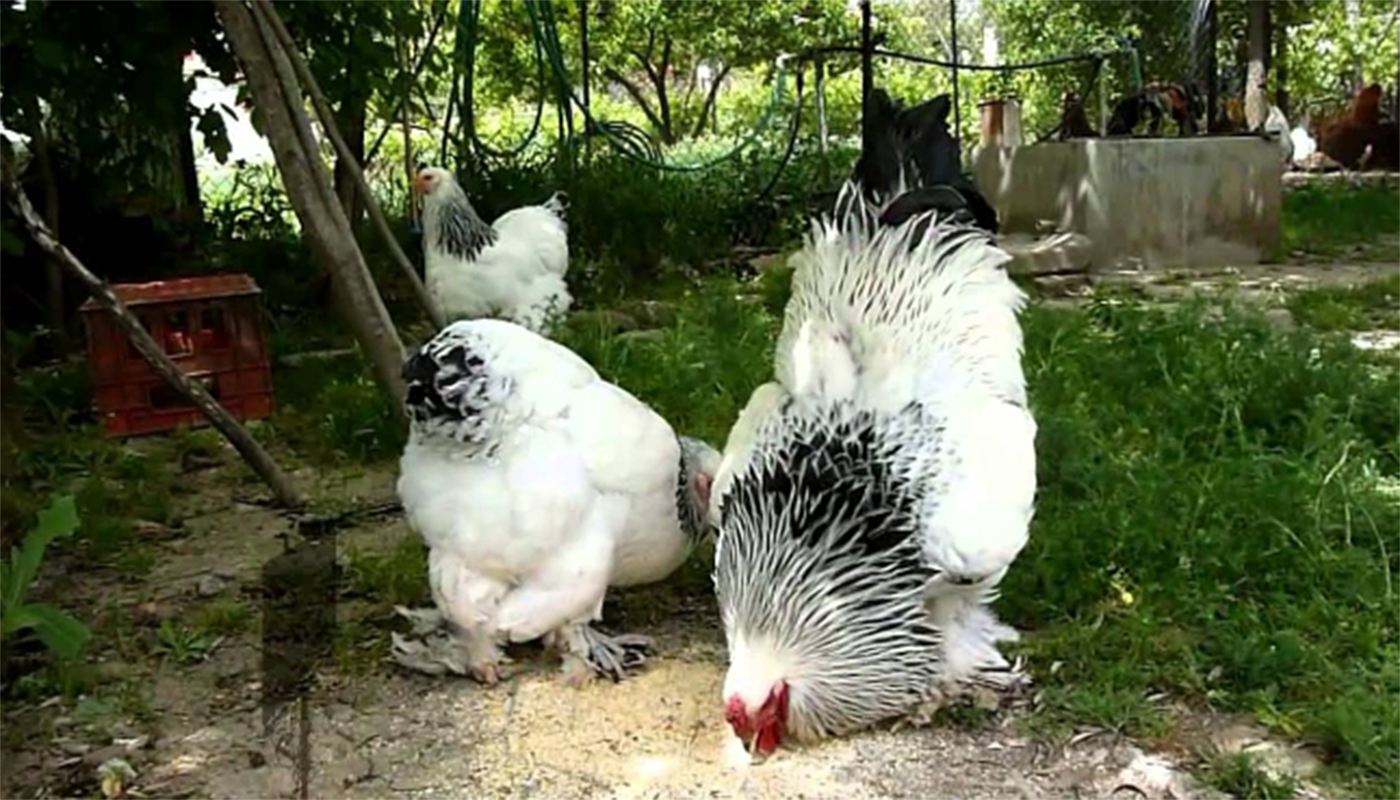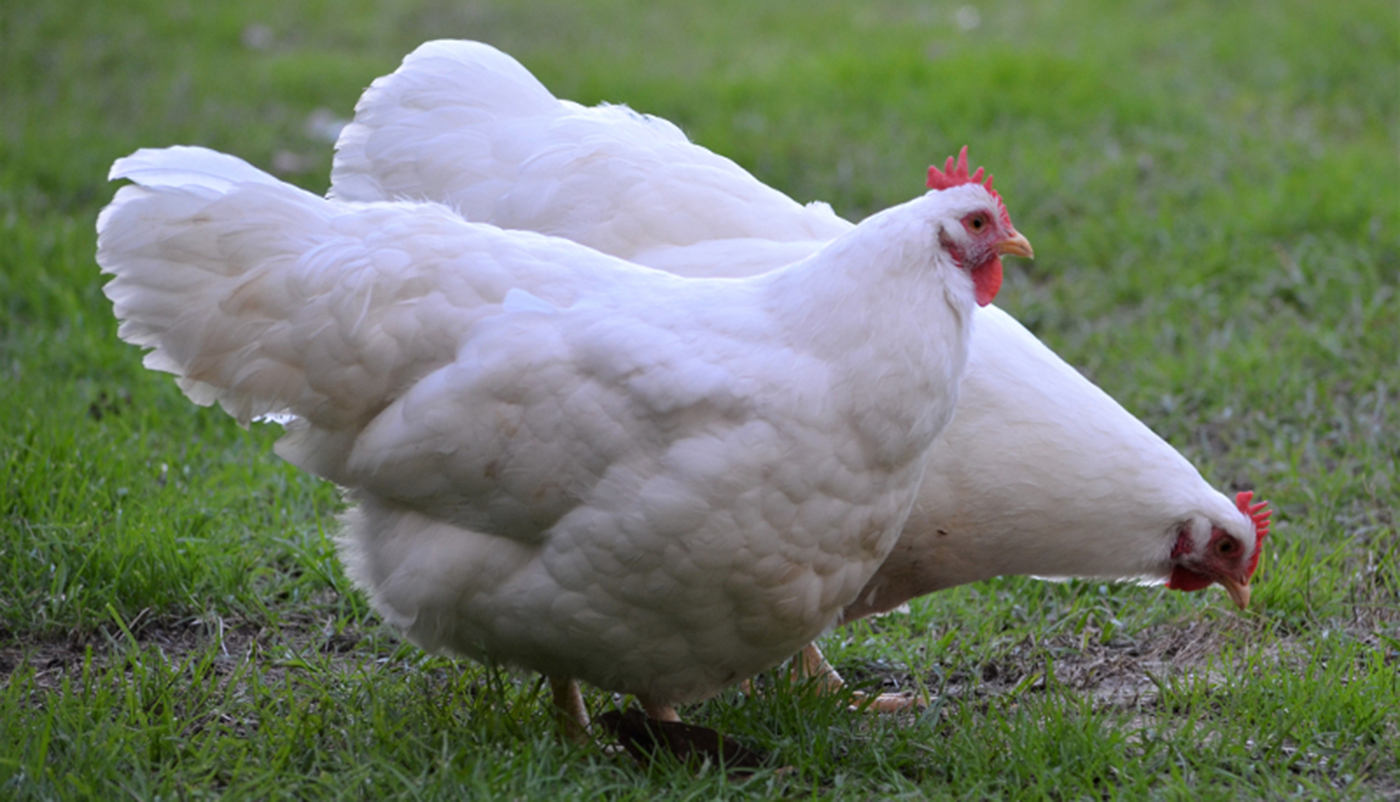
These chickens may look different and at first glance, most people may even think there is something wrong with them. At first glance, you can see why people would think that. The Naked-Neck chicken has up to fifty percent fewer feathers than other breeds and a naked plucked looking neck. That is why they are called Naked-Neck chickens or Transylvania Naked Neck chickens after all!
They may not look too pretty but these birds are a very hardy breed that even with low feathers do not mind the cold. They will need some nice warm shelter to warm themselves up after a wintery walkabout around the garden. They can also withstand the heat but will need a bit of attention as they can get sunburnt but there are easy preventative measures for this.
They are a large bird with a sweet friendly nature and can be quite entertaining as they are also quirky with their own amazing characters. They make great pets with the added bonus of laying a decent number of medium-sized eggs for the table and they are known for their good quality meat as roasters. They are in fact quite a popular backyard chicken in France.
| Country of Origin: | Transylvania |
| American Poultry Association: | Yes – They are recognized as a breed of chicken in the United States They were accepted into the Standard of Perfection by the American Poultry Association in 1965 |
| Chicken Category: | All Other Standard Breeds |
| Chicken Class: | Miscellaneous |
| Bantam Variety Available? | Yes – Single Comb Clean Legged Bantam Classification |
| Good Starter Chicken? | Yes, these active friendly birds are very hardy and self-sufficient |
IDENTIFICATION⇒ |
Appearance/Body: These are large birds with naked necks and legs. Their carriage is medium to high with a spread tail and on average have up to fifty percent fewer feathers than standard chickens. They have long clean yellow legs with four toes. Their wattles, comb and earlobes are a bright red and not very large. They have amber color eyes and yellow beaks.
Color(s) Red, White, Black and Buff
Comb: They have a single comb
Ave. Weight: Pullet: 5.5 lbs.
Hens: 6.5 lbs. Cockerel: 7.5 lbs. Rooster: 8.5 lbs. |
PURPOSE⇒ |
Eggs: They are very good egg layers.
They lay medium sized light brown eggs They lay 120 – 180 eggs per year They will lay consistently throughout the year They start to lay eggs from around 22 weeks old.
Meat:They have yellow skin
They grow fast and have good high-quality meat making them excellent table birds
Breeding: They can be breed
The hens do get quite broody and frequently They also make good brood hens They will sit on their eggs They will raise their own chicks and make excellent mothers They are great foster moms for other chickens/breeds chicks
Show Bird: They have been used as a show bird
Pets: They are very friendly and loyal pets
Other: At first glance, it will appear that you have a small turkey in your garden they lend a flock a very different look.
|
CHARACTERISTICS |
|
|---|---|
| Life Expectancy: | The average lifespan is 7 – 8 years |
| Health: | Despite their appearance, they are quite healthy chickens that do not have any known health issues. |
| You may Also Like: | HOW TO TELL IS A CHICKEN IS SICK |
| Temperament: | They have an easy going and friendly nature |
| Flyers? | They have great difficulty flying so most do not even attempt it |
| Noisy Birds? | They are quiet birds |
| Interaction with other chickens: | They have not problem interacting and mingling with other chickens/breeds in the flock |
| Good with kids? | These chickens can be fun and educational for supervised children |
| Socialize Behavior? | They will mingle around other domestic animals but do tend to prefer the company of their humans or their own kind. |
| You may Also Like: | HOW TO SOCIALIZING YOUR NEW CHICKENS |
| Known predators: | Always keep an eye on domestic pets such as dogs and cats. If hawks and or foxes are in your area it is always best to take precautions. Check with local animal shelters, zoos, vets, animal control and or pet stores about common predators in your area. |
| Conservation Status: | These birds conservation status is recorded as “study” |
IDEAL ENVIRONMENT |
|
|---|---|
| Garden Size: | They can adapt to pretty much any size garden and take to confinement quite well. |
| Ideal Climate: | They can withstand most climates without much fuss. But still need warmth with no drafts in the winter and shad in the summer to protect their exposed necks. |
| Ideal Coop: | The rule of thumb for any coop is 50 cm x 50 cm per hen/rooster in the coop. Ensure there is a good space for the nesting boxes and nightly roosting rails at least 1.5 inches wide. Good ventilation for air but not too drafty especially in winter. It is always a good idea to raise the coop off the ground to give the birds a dry place to roost and lay especially in wet weather. |
| Ideal Coop Run: | They really do not fly so the coop run does not to be completely covered. Although it may be good practice to cover it to give your chickens extra safety and your peace of mind. |
| Ideal Flock Size: | As with any chicken they need the company of another chicken or two but are generally happy in any size flock. |
| Special Instructions: | Other than protecting their necks from the cold and heat they are rather low maintenance hardy chickens. |
| Accessories: | The following accessories are ideal for your coop: Nesting boxes Straw for the boxes and roosting area Roosting rails Perches Water troughs/bowls Food bowls/feeders Heating lamp(s) Animal carrier for transport purposes |
| You may Also Like: | 45 FREE DIY CHICKEN COOP PLANS, TUTORIALS AND DESIGNS |
WHERE TO BUY THEM |
|
|---|---|
| Live Poultry Outlets: | Naked-Neck chickens can be found at a lot of live poultry outlets, poultry farms and hatcheries. |
| Internet Poultry Websites: | If you do a search on the internet you are bound to find a few internet sites that offer various chicken breed including the Naked-Neck chicken. Before buying your birds from any internet or live poultry outlet it is always best to check on the quality and breed authentication of the birds. |
| Organizations: | Associations like the American Poultry Association and organizations like the American Livestock Conservancy usually keep up to date lists of breeders, poultry farms and clubs. |
HISTORY
The Naked Neck chicken is believed to originally have come from Transylvania. The breed as we know it today, however, was mainly developed in Germany. The Naked Neck chicken was developed as a smooth-skinned dress fowl that was a lot quicker and easier to pluck.
The Naked Neck chicken was once believed to have been a hybrid cross of the domestic turkey and chicken. Thus, the breed was often referred to as the Turken. Whilst the Naked-Neck chicken really does look like half turkey half chicken scientist have longs since proved that the two species are genetically incompatible. The Naked Neck trait in a chicken is actually caused by an “incompletely dominant allele”. The Naked Neck gene has bee shown to actually improve the breast size of the chicken and reduce heat stress in some chicken breeds. If the gene is bred into various broiler breeds it can actually help to lower the chicken’s body temperature to help with better body weight gain.
The Naked Neck chicken has proven to be an excellent forager and is also immune to most diseases.
They have been and still are a very popular bird in Europe especially in France and Germany.
They are, however, not very popular in America with very few breeders and backyard farms keeping them. This is quite a shame as these chickens are really easy to tame, friendly and very calm. They were first seen in America around 1924 and were accepted into the Standard of Perfection by the American Poultry Association in 1965.
NOTES / SPECIAL INSTRUCTIONS
As they are registered as a “watch” conservation status they may need an extra license to own or keep in your garden. For advice on what the bird’s conservation status and orders are please check with your local conservation department.
For breeders, it is imperative that you always check your bird’s bloodlines and ensure you are buying your birds from a reputed breeder/farm. In order to sell birds of such stature, they have to be recorded and documented, always check with local animal breeding organizations for these records.
These legitimate documents are also required should you wish to show your bird(s) in various poultry shows/competition showings.
For information and advice on adopting rescued animals, you can visit or contact your local animal welfare center.
Video
USEFUL LINKS
- Caring for your Chicken
- Feeding
- Health
- Socializing your Chicken
- Breeding Chicken
- Raising Chickens A-Z
- Hatching Eggs
- What is Molting
- Animal Shelter (ASPCA)
- American Veterinary Medical Association
- American Poultry Association
- American Animal Welfare Society
- American Animal Control
- American Animal Husbandry Society
References
- https://en.wikipedia.org
- https://livestockconservancy.org
- https://www.roysfarm.com
- https://www.mypetchicken.com
- https://www.backyardchickens.com
- https://www.feathersite.com/
 Silkie Chicken Breed – Everything You Need to Know
Silkie Chicken Breed – Everything You Need to Know 10 Chicken Breeds that do well among other Chicken Breeds for a Mixed Flock
10 Chicken Breeds that do well among other Chicken Breeds for a Mixed Flock GETTING READY TO HATCH THE EGGS – HATCHING EGGS PART 3
GETTING READY TO HATCH THE EGGS – HATCHING EGGS PART 3 La Fleche Chicken Breed – Everything You Need to Know
La Fleche Chicken Breed – Everything You Need to Know CONDITIONS THAT AFFECT A CHICKENS SKIN
CONDITIONS THAT AFFECT A CHICKENS SKIN All about Pullets, Hens and Eggs
All about Pullets, Hens and Eggs 80+ Best Chicken Coops and Runs to Buy
80+ Best Chicken Coops and Runs to Buy Understanding Chicken Stress: Causes and Solutions | Tips for Happy Flocks
Understanding Chicken Stress: Causes and Solutions | Tips for Happy Flocks Chicken Breeds that Lay Brown, Blue, Green, Olive, Pink or Different Colors
Chicken Breeds that Lay Brown, Blue, Green, Olive, Pink or Different Colors Feeding your Chickens
Feeding your Chickens The Ins and Out of the Chicken coop
The Ins and Out of the Chicken coop Lamona Chicken Breed – Everything You Need to Know
Lamona Chicken Breed – Everything You Need to Know